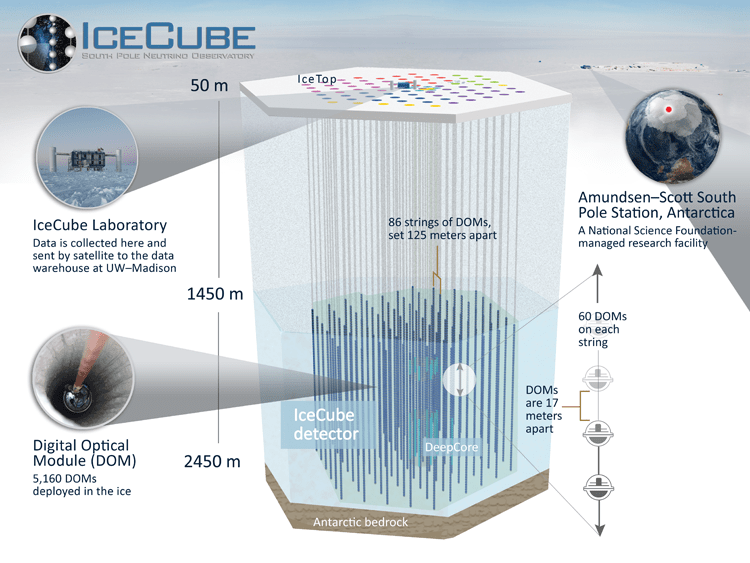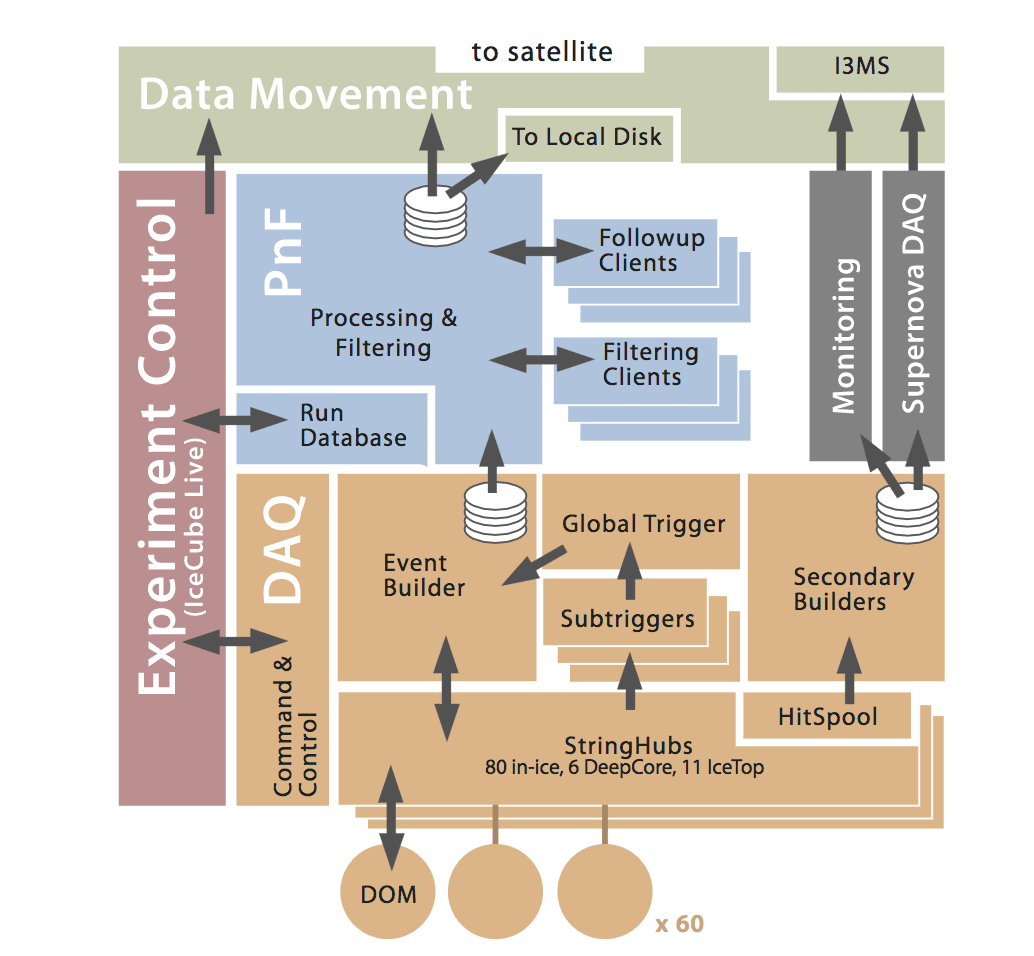The IceCube detector has been explained widely—in many different languages and in hundreds of locations around the world, and targeting diverse audiences online as well as in auditoriums, museums, and classrooms. But this is the first time that the IceCube Collaboration is making public every detail of the only cubic-kilometer neutrino detector to date, from a flasher board in the digital optical modules—aka DOMs—to the calibration processes that allow researchers to measure the properties of neutrinos, or to the IceCube Live website that IceCubers use to monitor what is going on in the detector. The publication, over 70 pages long, has just been submitted to the Journal of Instrumentation.

A few things that you might like to know and that, perhaps, you had never heard before:
-
5,397 of the 5,484 deployed DOMs are continuously collecting data, and less than 1% of the sensors have failed since they have been commissioned in the frozen ice. Based on the high reliability observed, IceCube could be running with more than 95% of its sensors even 50 years from now.
-
Each DOM detects individual photons and accumulates data for a period of about one second before sending the data up to the ICL (IceCube Lab).
-
Turning light pulses in IceCube into precise measurements of the particles crossing the detector requires a complex calibration system. This system includes a continuously running process that keeps a standard time base of the whole array and the master clock in the ICL. Photons arriving at every DOM are recorded with an accuracy of 1–2 nanoseconds. One nanosecond is the time it takes for a photon to travel the distance comparable to a DOM. This precision may be compared with the typical travel time of 3000 to 4000 nanoseconds that it takes an energetic particle such as muon to travel across the entire detector.
-
The noise rates of IceCube DOMs are extremely low mainly due to the absence of radioactivity in the Antarctic ice, which is extremely pure. The remaining low noise level of about 0.5 kHz was achieved by careful selection of the photomultiplier and the DOM glass housing.
-
The data acquisition system (DAQ) looks for patterns of hits in the detector—i.e., light arriving in nearby detectors within a short time—that could have been created by a particle. These “triggers” are combined into IceCube events.
-
Every year, IceCube records about 100 billion cosmic ray muons, about 100,000 neutrinos generated in the atmosphere from cosmic rays, and on the order of 100 neutrinos of direct astrophysical origin.
-
Every year IceCube adds new data filters that identify potentially interesting events, such as a very high energy neutrino or a theorized exotic particle such as a magnetic monopole.

“Building a large detector deployed more than two kilometers deep in the ice near the South Pole seemed a rather extreme proposition at the time, and it surely was a major technological and logistical challenge,” says Albrecht Karle, IceCube’s Associate Director for Science and Instrumentation. “This paper provides an important and definitive reference for the technical design and realization of IceCube.”
IceCube was built between 2004 and 2011. Since then, the collaboration has announced the discovery of astrophysical neutrinos and has published many more outstanding results in neutrino astronomy, cosmic-ray and neutrino physics, dark matter, and glaciology. While we await more great results, this paper celebrates again the successful construction of the first cubic-kilometer neutrino detector.
“IceCube is a unique astrophysical instrument whose success builds on the concerted efforts of hundreds of collaborators around the world, an excellent example of how the whole can be greater than the sum of its parts,” states Olga Botner, spokesperson of the IceCube Collaboration.
Five years after its completion, IceCube is still the only gigaton neutrino detector, but construction of next-generation detectors in the Mediterranean and Lake Baikal is underway. IceCubers are also working on an extension of the Antarctic telescope, the so-called IceCube-Gen2, that will instrument a 10 times larger volume, increasing the efficiency for astrophysical neutrinos up to the highest energies and improving the capabilities for neutrino physics.
+ info “The IceCube Neutrino Observatory: Instrumentation and Online Systems,” The IceCube Collaboration: M. G. Aartsen et al. Journal of Instrumentation 12 (2017) 3, iopscience.iop.org arxiv.org/abs/1612.05093